
Bird Friendly Garden: Design Ideas & Plants
More and more natural habitat is disappearing, to help protect garden birds and other species you can make your garden bird-friendly. When it comes to garden design, food resources and nesting sites are the two most important factors that encourage birds to settle. Here you can find out which shrubs are important for birds, what they eat and how you can make your own bird food. We also tell you what you need to consider when building a bird house.
This Article Contains:
- Attracting Birds: Designing a Bird-Friendly Garden
- Create Shelter for Birds: Hedges for Bird Nests
- Feeding Birds: What Do Blackbirds, Titmice and Other Garden Birds Eat?
- Bird Food: Rowan Berries and Other Native Plants
- Feeding Birds Throughout the Year
- Make Your Own Bird Food for the Winter
- Build Your Own Bird Box
- Frequently Asked Questions About Bird-Friendly Gardens
Quick Overview
Bird-Friendly Garden: Tips & Tricks
- Native plants are the basis for bird conservation and provide them with habitat and food
- Flowers of shrubs attract insects and later in the year the fruits serve as food.
- Mixing your own bird food is cheaper and more nutritious than bought bird food.
- In winter, fat food is best
- Birdhouses are divided into nesting boxes and bird feeders; different bird species use different nesting boxes.
Attracting Birds: Designing a Bird-Friendly Garden
If birds feel at home in your garden, this has several advantages for the ecosystem, so it is always worthwhile to design a bird-friendly garden. This includes, for example, the planting of native plants, the avoidance of pesticides and gardens rich in structure. Diversity in the garden and a little "disorder" make it easier for birds to build their nests. They can find twigs, clay, pine needles, moss, dried grass cuttings, leaves and feathers.
Even if no species is saved from extinction by your own garden, the protection of typical garden birds is an important contribution to species conservation and the preservation of biodiversity. As beneficial animals, some bird species even offer you advantages when growing vegetables, because they eat aphids, caterpillars, larvae and maggots.

Create Shelter for Birds: Hedges for Bird Nests
Hedges and shrubs serve native birds in summer and winter as a building site for their nests. They are also used as shelter in bad weather or as a protected place to sleep at night. The most suitable plants are those that offer shelter and nesting opportunities as well as bird food. This can be either the fruits and seeds of the plant directly or insects that are attracted by the flowers. Typical hedge birds include warblers, shrikes, robins, wrens, magpies and linnets.
These plants are suitable for a bird-friendly garden:
- common snowball
- common privet
- hedge roses
- spindle tree
- hornbeam
- alder
- rowan berry
- blackthorn
- sessile elderberry
- blackberry
- black Elder
- cornelian cherry
- hawthorn
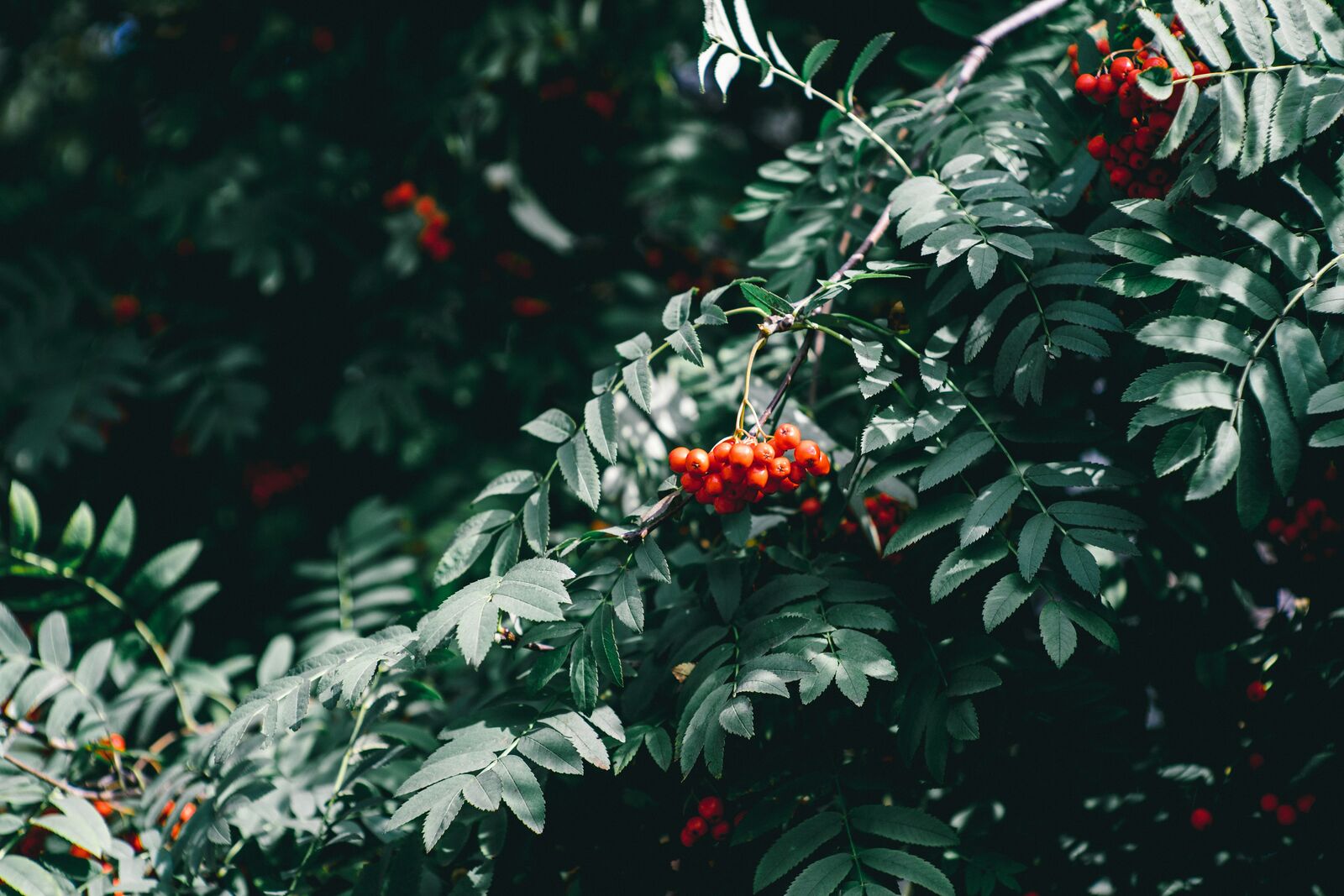
If you decide to plant them in the garden, it is best to do so between September and March on a frost-free day. As far as hedge pruning is concerned, any radical pruning or stocking (i.e. cutting down to a few centimetres above the ground) should best not be done between 1 March and 30 September. Gentle shaping and maintenance pruning is, however, allowed during this period if you make sure that there are no nests in the hedge.
Feeding Birds: What Do Blackbirds, Titmice and Other Garden Birds Eat?
The food sources of native wild birds include plant seeds, insects and other invertebrates such as earthworms or snails. In terms of food intake, a distinction is made between grain eaters and soft food eaters. Grain eaters include tits, nuthatches, woodpeckers and finches. They prefer grain mixtures with sunflower seeds, hemp seeds and oat flakes. Soft feeders have a smaller beak and are satisfied with wild berries, fruit, ground nuts and very small seeds. They include, for example, wrens, treecreepers, robins and thrushes.
In spring, during the breeding season, protein-rich food (insects, larvae, caterpillars) is especially important for the offspring. In winter, on the other hand, it is mainly food with a high fat content (nuts and seeds, coconut fat or suet) that provides the birds with enough energy to maintain their body temperature. However, this does not mean that every bird species eats everything. Each bird species still has its own diet.

Plan a Bird Friendly Garden With Fryd
With our garden planner you can create a virtual garden plan for your vegetable patches, hedges and trees. You can easily plan a diverse mixed crop because companion plants are displayed directly and you get tips on succession planting and crop rotation!
Plan Your Garden hereBird Food: Rowan Berries and Other Native Plants
Not only plants that have the word bird in their name (rowan, chickweed) serve as food sources and nesting sites. Some native flowering plants are also suitable for attracting many insects that are on the menu of many birds. In addition to hedges and shrubs, perennials such as cornflowers, autumn asters, evening primroses, corn poppies and snapdragons are also suitable bird feeders for bird-friendly gardens. Sunflower seeds are picked directly from the plant by some bird species.
- The rowan (Sorbus aucuparia) bears rich white umbel panicles from May to June, which attract many bees, beetles and flies. In autumn and winter, the orange berries are attractive to birds and are eaten especially after the first frost.
- The black elder (Sambucus nigra) is also a native shrub. The flowers of the shrub with fragrant umbels in May and June are visited by many insects. In August and September, songbirds are attracted to the black berries as food.
- Although the common privet (Ligustrum vulgare) is often spread as a hedge, the plant proves most useful as a shrub. The native species of the plant also bear white flowers in panicles and black fruits. In combination with hawthorn and dogwood as a wild hedge, one can create an optimal supply of flowers and fruits throughout the year.
- Ivy (Hedera helix) is particularly enriching because the formation of flower and fruit is unusual. In this way, ivy provides food when most other plants have already run out of berries and flowers. Even in late autumn, it bears nectar-rich flowers that provide berries until spring. In winter, the plant provides food and shelter by covering the ground or growing along walls and trees.
- To introduce just one example that does not belong to the shrubs: Yarrow (Achillea millefolium) grows in the garden in the flower meadow rather than in the bed. The wild form is particularly visited by hoverflies, beetles and ants. The oily seeds are particularly eagerly eaten by finches.
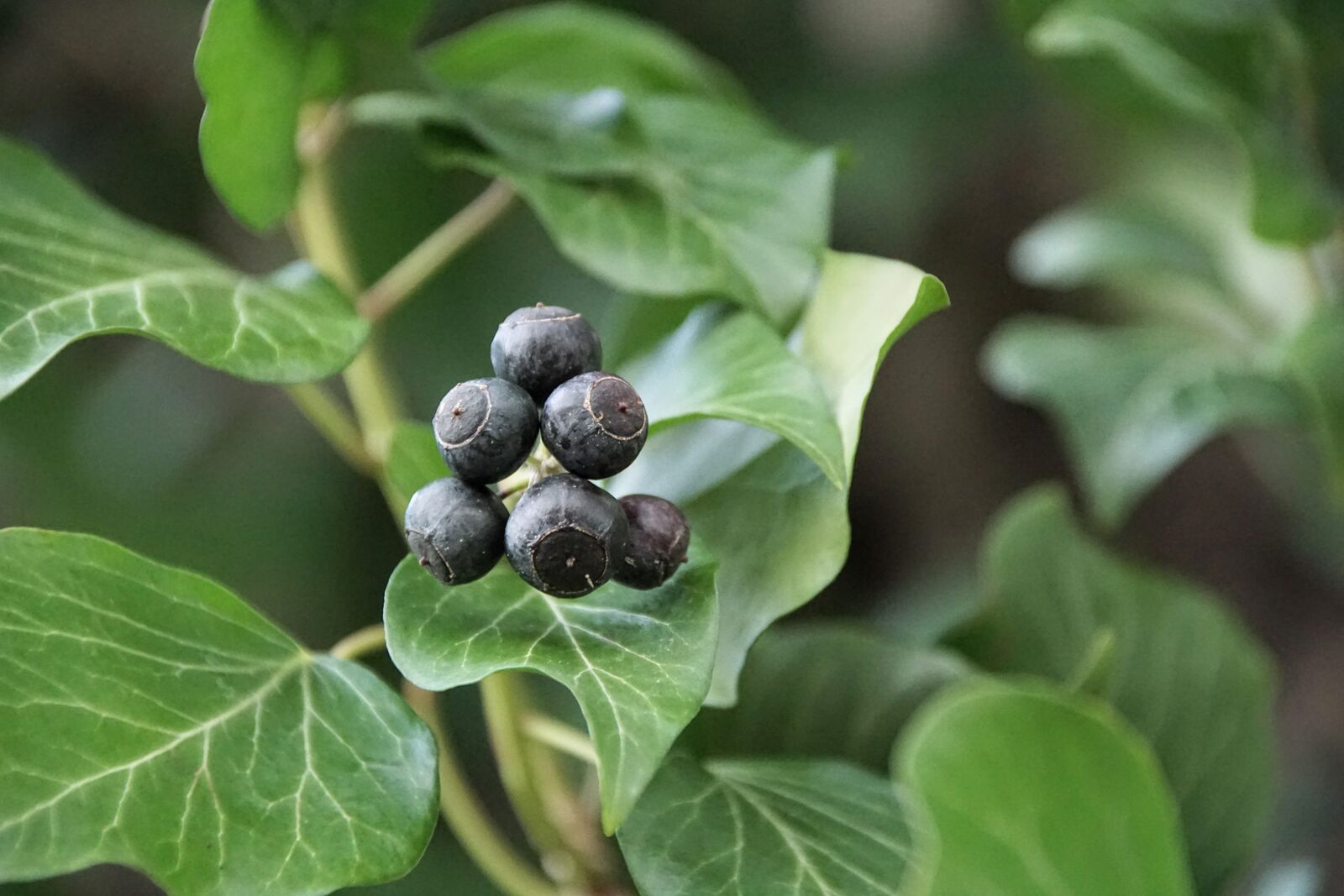
Although this idea is only a selection, there are some options for planting bird-friendly shrubs. In contrast, many cultivated flowering plants such as cultivated roses unfortunately bring little benefit to birds and other native animals. Therefore, non-native species such as cherry laurel or forsythia can be safely replaced among the many alternatives.
Feeding Birds Throughout the Year
Providing bird food in the garden for native bird species creates an expanded food supply through supplementary feeding. However, this does not replace natural food sources. Feeders are a good way to observe birds and get to know typical garden birds. However, this does not solve the fundamental problem that natural habitat and thus feeding and protection opportunities are increasingly being lost. A wide range of natural food is always the most species-appropriate and best solution.
There are very different opinions among experts about how sensible bird feeding is throughout the year. This is because little research has been done on the effects. However, there is general agreement that bird feeders are helpful in winter when there is snow and ice. Which species benefit most from bird feeding and how it affects them is yet to be answered. As a garden owner, it is therefore important, when in doubt, not to offer high-fat and large seeds from April to July. Instead, you should increase the protein supply. In winter, on the other hand, you should offer fat food.
When it comes to bird food, it is better to mix it yourself, because it is not only cheaper, but usually also more nutritious for birds. Purchased bird food, especially the inexpensive varieties, often consists to a large extent of fillers (cereal seeds, millet or oat flakes). These are not bad in principle, but are only found in quality food in a proportion that the birds would actually eat. Another problem with purchased compound feed is that it sometimes contains ragweed seeds, which spread even further through the bird food. This plant is not native to Europe and can cause allergic reactions and asthma.
Suitable Mixtures for Homemade Bird Food:
- sunflower seeds: 40 - 65 % fat, 20 - 40 % protein
- peanuts: up to 35 % protein, 40 - 50 % fat
- safflower seeds: finer seeds, very oily
- hemp seeds: fine seeds, 30 - 35% fat
- millet seeds: finer grains, high in starch, 10 % protein and low in fat
- cereals (wheat, oat flakes and dried maize): high starch, low protein and fat
- fruit (dried or fresh e.g. apples), berries
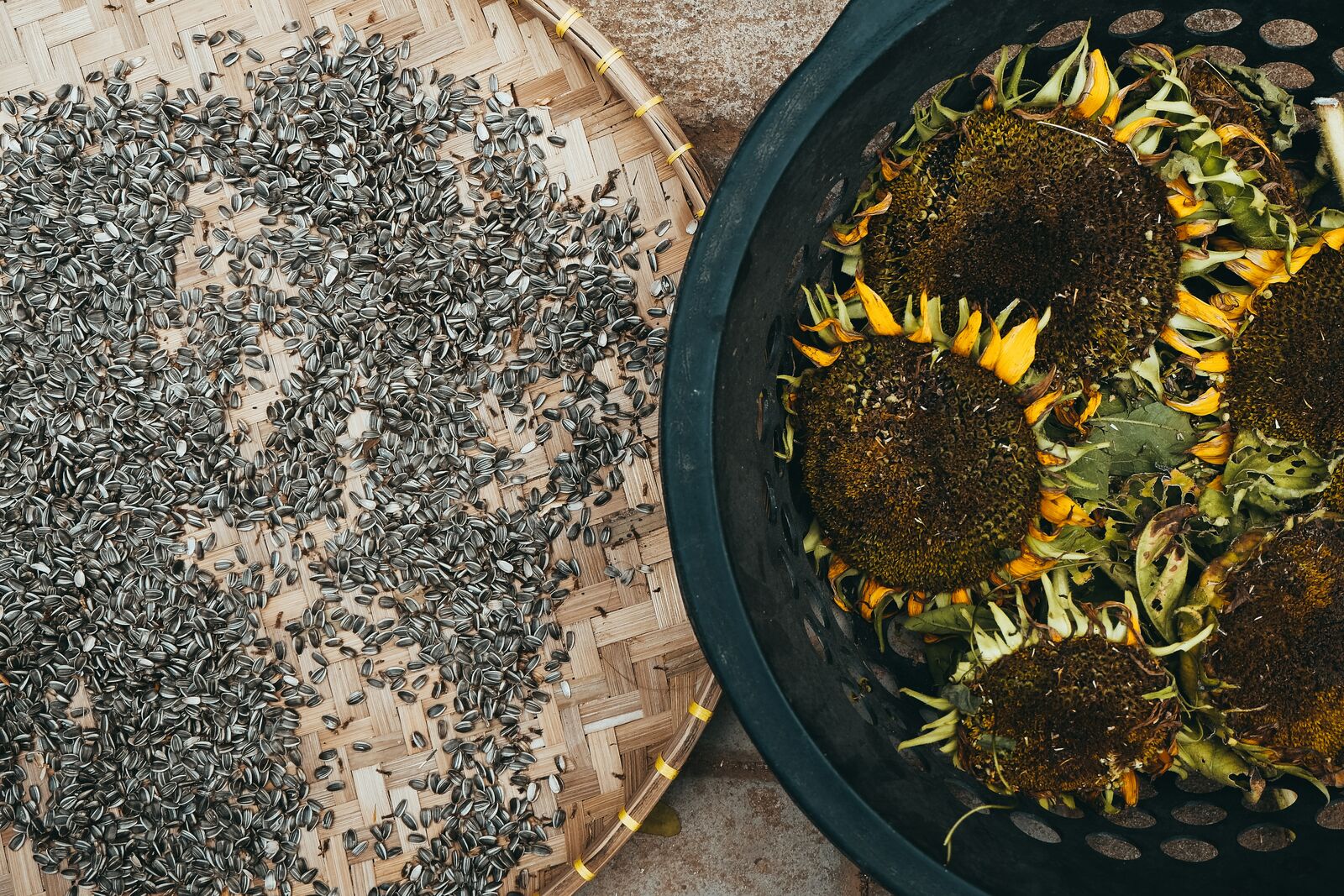
Here’s What to Look out For:
Basically, it is important to clean the feeding areas regularly. Droppings and leftover food should be removed daily. In addition, you should clean open feeders weekly with boiling water to reduce disease transmission between birds (especially important in summer!). You should always wear gloves, as birds can also transmit diseases to humans!
Although the amount eaten each day varies greatly from month to month, you should only spread as much as you know will be eaten in a day. To prevent mould and rat infestation, it is best to place the food under roofs or in feeding columns or silos.
Under no circumstances should birds be fed cheese, food scraps and other things containing salt, uncooked rice, shredded coconut or dried bread. Of course, spoiled food is also a taboo.
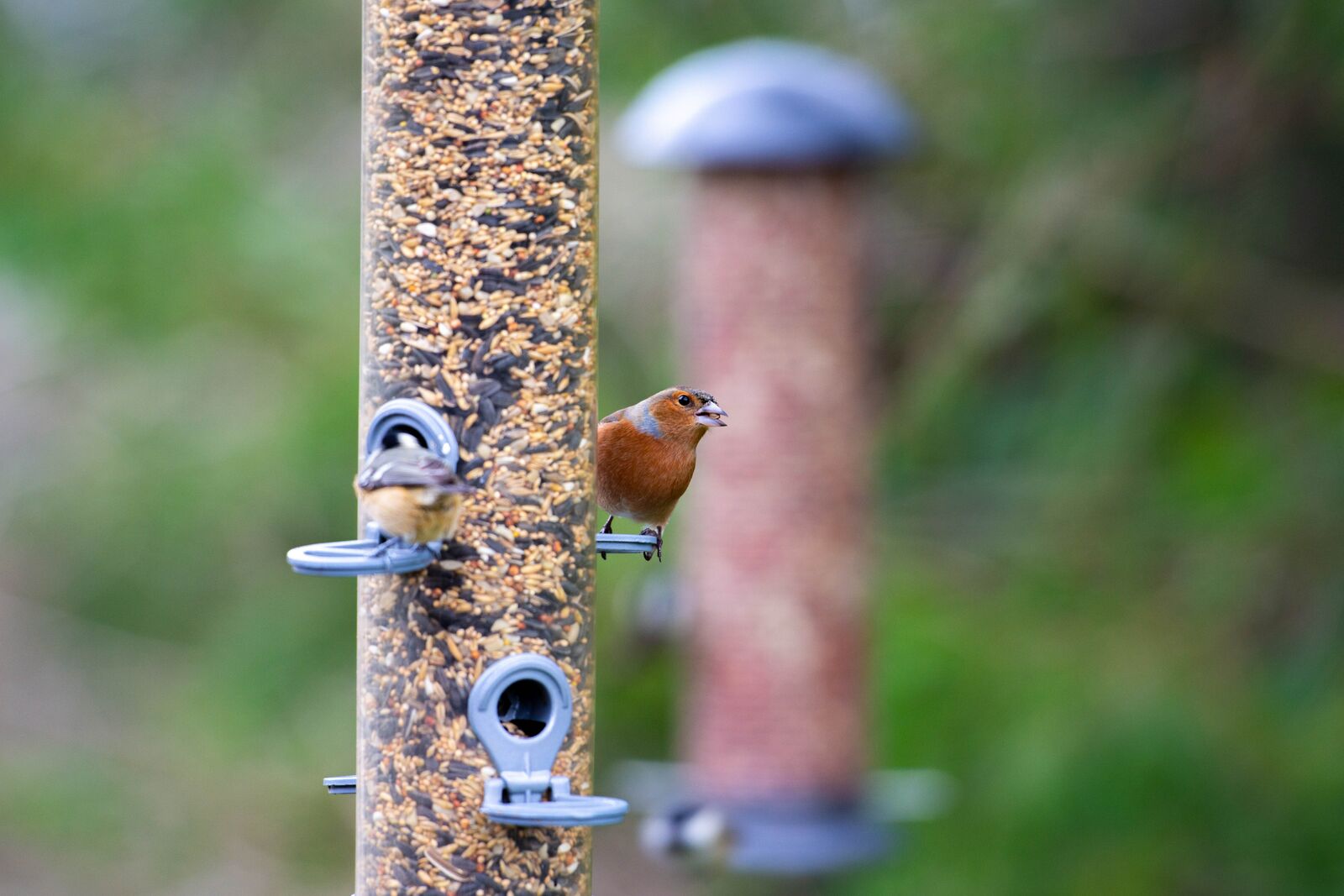
Make Your Own Bird Food for the Winter
Native bird species that mainly eat insects often move to warmer areas during the cool months for this reason. So-called resident birds, which do not fly away for the winter, are then left with seeds from perennials. However, foraging on the ground is very difficult, especially in frost and snow. In addition, the shorter days leave less time for foraging in daylight. The energy from the food is used to keep warm in cold and wet weather as well as in winter. Therefore, the demand is particularly high in winter.
Instructions: Make Your Own Fat Feed
Ingredients
- 1 - 1.5 part(s) of fat: Certified beef tallow, high-quality coconut fat or palm fat are suitable; lard and magarine are not suitable.
- 1 part protein from a mixture of plant seeds, peanut flour, broken grains, sultanas or insect larvae.
Here's How:
- Melt half the fat in a saucepan, then remove from the heat and add the other half.
- Stir in the feed and leave to cool.
- Put the mixture of fat and grains into a suitable mould (e.g. empty coconut shells, clay flower pots, biscuit moulds or on pine cones). Basically, small portions are best, as they can be eaten in a short time. If necessary, you can also freeze them and defrost them again when needed so that the fat does not go rancid.
Build Your Own Bird Box
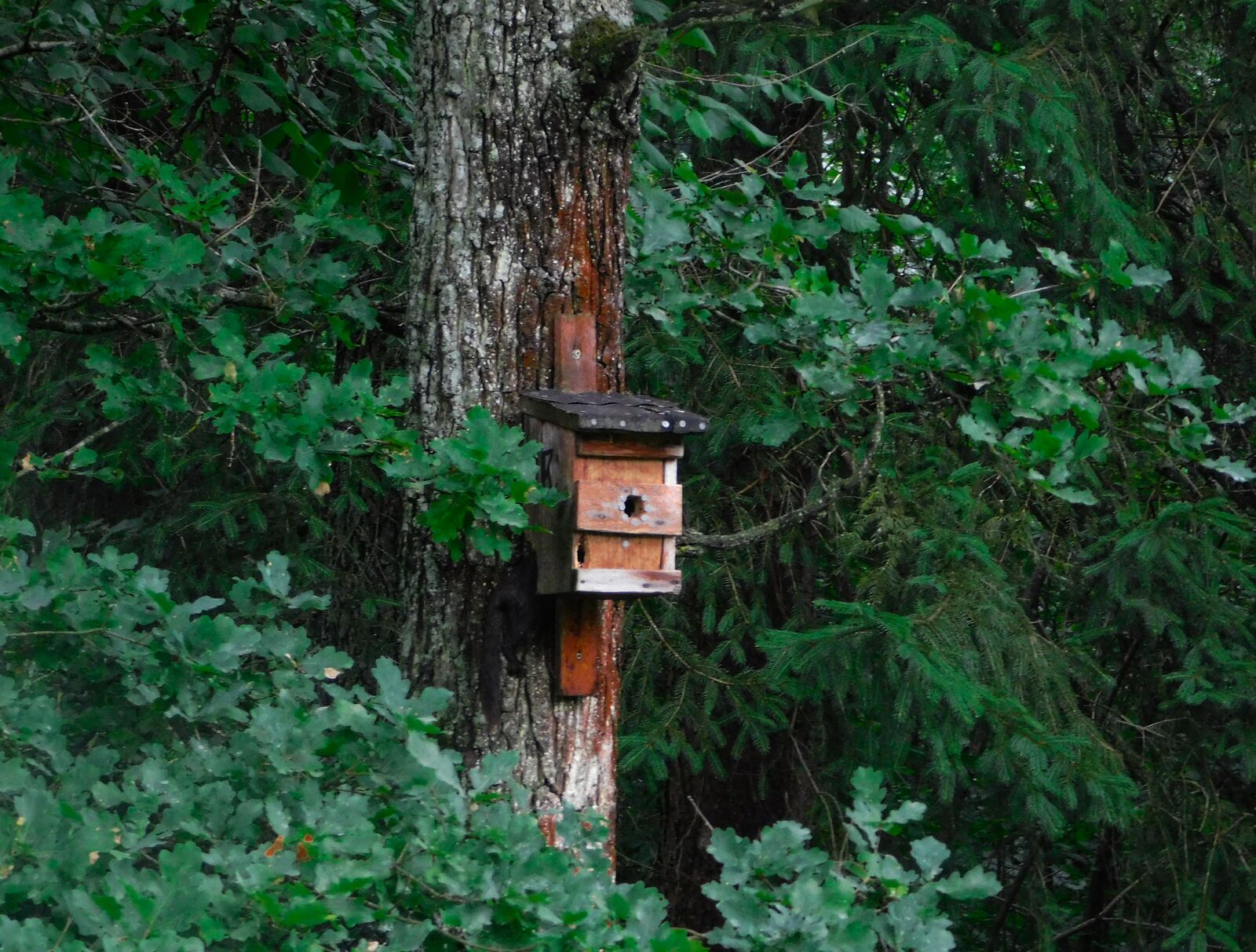
Birdhouse or Nesting Box?
The term "bird house" immediately conjures up an image in everyone's mind. However, it is important to clearly differentiate between a bird feeder and a nesting box. Therefore, you should first decide what purpose your bird house should have. There cannot be a mixture of both, as they are built and placed differently. Typical nesting sites differ depending on the species: there are cavity breeders, niche breeders and free breeders. Accordingly, there are a variety of building instructions for birdhouses and nesting boxes designed for only one species. Birdhouses are not a panacea for bird protection, but they are a good step towards creating breeding and feeding places for birds.
Build Your Own Nest Box: What to Consider
Spruce, pine and fir wood are best suited for building a bird house as a nesting box. However, hardwoods such as hornbeam and alder are also a good choice. The board thickness should be 20 - 24 mm/0.8 - 0.9 in. The grain should run vertically so that rainwater can run off. The outside should be impregnated with a gentle wood preservative or linseed oil. When impregnating, pay special attention to the roof (roofing felt is not necessary). However, nesting boxes should only be hung up when the smell has disappeared.
It is best to hang them in autumn so that they can be used for roosting in winter and then directly as nesting sites in spring. The height at which they are hung depends on which birds you want to attract. A height of three to four metres is a good average and also quite cat-proof. Placing the homemade birdhouse near a hedge allows the birds to seek shelter quickly in case of danger (e.g. from cats). The size of the flight hole also determines which bird species will use the nest box. It is particularly important that the box can still be reached (and opened!) for cleaning.
Cleaning is done in October, either mechanically or, in case of heavy soiling, with soda lye and always wearing gloves. If you notice that all the nest boxes in the garden are being used, you can increase the number.
Want to get helpful gardening tips all year round and plan your own beds optimally? Then register here or download the Fryd app for Android or iOS.
Fryd - Your digital bed planner
Cover image: Photo by Vincent van Zalinge on Unsplash.

Emilie
Emilie is studying agricultural sciences at the University of Hohenheim. She finds it fascinating how closely nutrition and health are connected and exciting which wild plants you can eat.
Learn MoreCurrent Topics in the Community
Hello, I just upgraded the app to "lifetime" and was really excited to start mapping out my garden beds, including the fruit trees and bushes I've already planted. But the program doesn't save my progress while I'm planning, so I have to start over again and again. Also, the program doesn't recognize specific varieties, so I can only enter "general" information. For example, I can't distinguish between a bush tree and a half-standard tree, which is also important. Am I doing something wrong? To be honest, I've already lost interest. Maybe someone who has been working with it for a while can give me some tips. Best regards, Anja

Liked 1 times
Am I the only one experiencing issues with the app or website responding extremely slowly?
Show 1 answer
Liked 8 times
Colorful visitor 🤗
Popular Articles

Overwintering Parsley: How to Do It Successfully

How to Grow Lettuce in Winter: Varieties, Sowing, Harvesting

Growing Sage Plant: Tips for Sowing and Harvesting

What Herbs Can Be Planted Together?

Create & Design a Permaculture Garden

Overwintering Plants: Tubs, Pots and Raised Beds

Pruning, Fertilizing & Propagating Currants: Care Tips

Pruning Raspberries: How to Do It

Vegetable Garden With Greenhouse: How to Use Greenhouse Effect

Winterizing Beds and the Garden: How to Do It
FAQ
What can you do for birds in the garden?
To support birds in the garden, grow bird-friendly plants that provide food and shelter. In addition, you can hang birdhouses and nesting boxes and provide a water source so birds can drink and bathe.
Which plants are bird-friendly?
Bird-friendly plants provide food, shelter and nesting opportunities. Examples are berry bushes, yews, junipers, climbers like ivy and flowering perennials like coneflowers.
Which birds are helpful in the garden?
Helpful birds in the garden include tits, robins and sparrows, which eat insects and pests. Blackbirds and thrushes contribute to natural pest control by killing slugs and caterpillars. They help maintain the ecological balance in the garden and promote plant health.
Which perennials are suitable for birds?
In addition to hedges and shrubs, perennials such as cornflowers, autumn asters, evening primroses, corn poppies and snapdragons are also suitable bird feeders for bird-friendly gardens. Sunflower seeds are picked directly from the plant by some bird species.